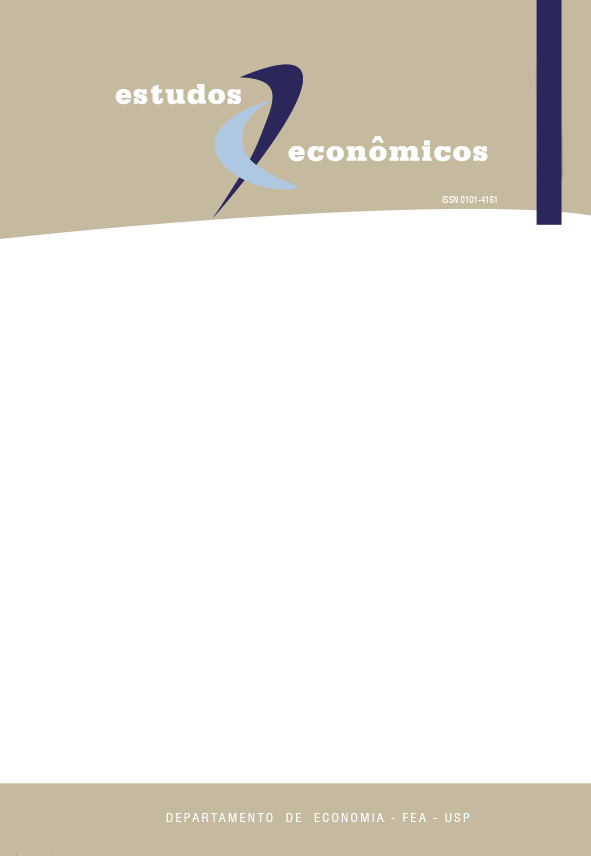Análise econômica da primeira Lei de Patentes brasileira
DOI:
https://doi.org/10.1590/0101-416146484aclpPalavras-chave:
Lei de patentes, Invenções, Eficiência das leisResumo
O Brasil foi um dos primeiros países a ter uma lei de patentes e um dos únicos a conceder
prazos de duração da patente de acordo com a qualidade da invenção. Este trabalho analisa
um banco de dados inédito com todos os 783 privilégios industriais concedidos sob a
vigência da primeira lei de patentes brasileira entre 1830 e 1882. Os resultados mostram
que a atividade inventiva esteve conectada à estrutura econômica e social da época e que a
escassez de mão de obra incentivou a invenção de máquinas e equipamentos para o setor
cafeicultor. O número de patentes apenas começou a se elevar a partir de 1870, quando a
economia brasileira passou por grandes mudanças que levaram ao seu desenvolvimento,
evidenciando que pouco resultado surge quando se institui uma lei de patentes em um
ambiente de estagnação econômica. Mesmo assim, a lei revelou-se o mecanismo menos
dispendioso para estimular a atividade inventiva no Brasil do século XIX.
Downloads
Referências
ACEMOGLU, Daron. When does labor scarcity encourage Innovation? Journal of Political Economy, v. 118, n. 6, p. 1037-78, 2010.
ACEMOGLU, Daron; LINN, Joshua. Market Size in Innovation: Theory and Evidence from the Pharmaceutical Industry. The Quarterly Journal of Economics, vol. 119 (3), p.1049-1090, August, 2004.
BAER, Werner. The Brazilian Economy: Growth and Development. Praeger, 2001.
BOLDRIN, Michele; LEVINE, David. The Case against Patents. Journal of Economic Perspectives,
(1), p. 3-22, 2013.
CANABRAVA, Alice P. História Econômica: Estudos e Pesquisas. Editora UNESP, 2005.
CERQUEIRA, João da Gama. Tratado da Propriedade Industrial. Vol 1. Editora Revista dos Tribunais, São Paulo, 1982.
CHANG, Ha-Joon. Kicking Away the Ladder: Development Strategy in Historical Perspective. Anthem Press, 2002.
CRUZ, Helio; TAVARES, Martus. As Patentes Brasileiras de 1830 a 1891. Estudos Econômicos 16,
no. 2 p. 205-25, 1986.
DENICOLÒ, Vincenzo. Patent Races and Optimal Patent Breadth and Length. The Journal of Industrial Economics, Vol. 44, No. 3, p. 249-265, 1996.
GALLINI, Nancy. Patent policy and costly imitation. The RAND Journal of Economics, p. 52-63, 1992.
GILBERT, Richard; SHAPIRO, Carl. Patent Length and Breadth. RAND Journal of Economics, 21,
no. 1, p. 106-12, 1990.
GOLDIN, Claudia. Cliometrics and the Nobel. Journal of Economic Perspectives. V. 9 no. 2, p. 191-208, 1995.
GRILICHES, Zvi. Patent statistics as economic indicators: a survey. Journal of Economic Literature 28, p. 1661-797, 1990.
KLEMPERER, Paul. How broad should the scope of patent protection be? RAND Journal of Economics v. 21, no. 1. p 113-30, 1990.
LANGINIER, Corinne; MOSCHINI, GianCarlo. The Economics of Patents: An Overview. CARD
Working Papers. Paper 335, 2002.
MACHLUP, Fritz; PENROSE, Edith. The Patent Controversy in the Nineteenth Century. The Journal of Economic History v. 10, no. 1, p. 1-29, 1950.
MARCONDES, Renato. O Mercado Brasileiro no Século XIX: Uma Visão Por Meio do Comércio de Cabotagem. Revista de Economia Política v. 32, no. 1,p. 142-66, 2012.
MAZZOLENI, Roberto; NELSON, Richard. (1998) Economic theories about the benefits and costs of patents. Journal of Economic Issues; v. 32, n. 4, 1998.
MOKYR, Joel. Intellectual Property Rights, the Industrial Revolution, and the Beginnings of Modern Economic Growth. American Economic Review, v. 99 (2), p. 349-55, 2009.
MOSER, Petra. How Do Patent Laws Influence Innovation? American Economic Review, 94(4), p. 1214–36, 2005.
MOSER, Petra. Why Don’t Inventors Patent? National Bureau of Economic Research Working Paper 13294, 2007.
NORDHAUS, William. Invention, growth and welfare, Cambridge, Mass., MIT Press, 1969.
NORDHAUS, William. The Optimum Life of a Patent: Reply. The American Economic Review, Vol. 62, No. 3, pp. 428-431, 1972.
ODAGIRI, Hiroyuki; GOTO, Akira; SUNAMI, Atsushi; NELSON, Richard. (Org.). Intellectual Property Rights, Development, and Catch-Up: An International Comparative Study. Oxford: Oxford University Press, 2010.
O’DONOGHUE; Ted; SCOTCHMER, Suzanne; THISSE, Jacques-François. Patent Breadth, Patent
Life, and the Pace of Technological Progress. Journal of Economics & Management Strategy, V.7, Issue 1, p.1–32, Spring, 1998.
RODRIGUES, Clovis. Inventiva Brasileira, Brasília: Instituto Nacional do Livro, 1973.
SCHERER, Frederic. Nordhaus’ Theory of Optimal Patent Life: A Geometric Reinterpretation. The American Economic Review. Vol. 62, No. 3 (Jun., 1972), pp. 422-427, 1972.
SCHMOOKLER, Jacob. Invention and Economic Growth. University Press, 1966.
SILVA, Sergio. Expansão Cafeeira e Origens da Indústria no Brasil. Ed. Alfa-Omega, 1986.
STIGLITZ, Joseph. Economic foundations of intellectual property rights. Duke Law Journal. Vol. 57: 1693, 2008.
STIGLER, George. Law or Economics? The Journal of Law & Economics Vol. 35, No. 2, pp. 455-468, 1992.
SUZIGAN, Wilson. Indústria Brasileira; Origem e Desenvolvimento. São Paulo, Hucitec, 2000.
VERSIANI, Flávio. Industrial Investment in an ‘Export’ Economy: The Brazilian Experience Before 1914. Journal of Development Economics 7, no.3, p. 307-29, 1980.
VERSIANI, Flavio, TANNURI-PIANTO, Maria; VERGOLINO, José. Demand Factors in the Nineteenth-Century Brazilian Slave Market. Proceedings of the 31th Brazilian Economics Meeting, 2003.
Publicado
Edição
Seção
Licença
Copyright (c) 2016 Andrea Felippe Cabello, Luciano Martins Costa Póvoa

Este trabalho está licenciado sob uma licença Creative Commons Attribution-NonCommercial 4.0 International License.
A submissão de artigo autoriza sua publicação e implica o compromisso de que o mesmo material não esteja sendo submetido a outro periódico.
A revista não paga direitos autorais aos autores dos artigos publicados.





 Atualizado em 14/08/2025
Atualizado em 14/08/2025